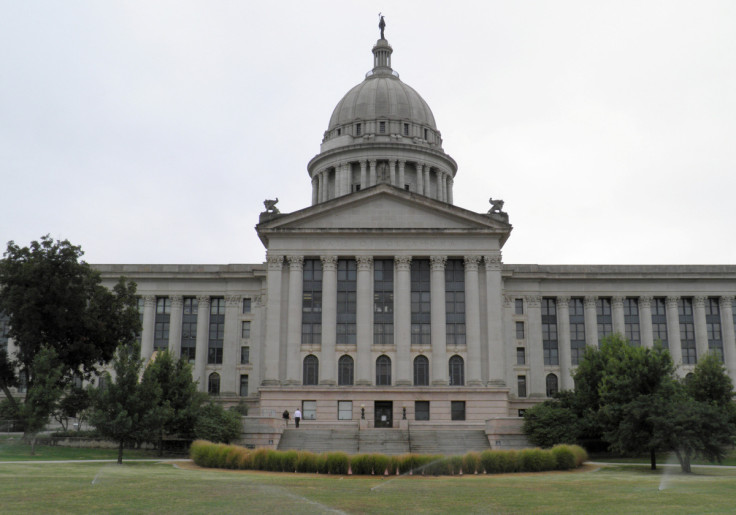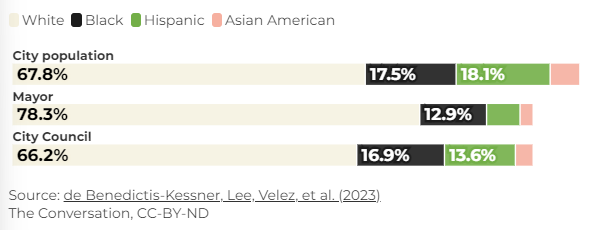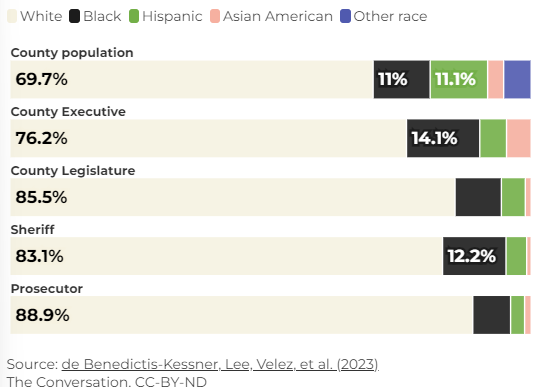
Latino representation is making progress in certain areas of U.S. society, but continues to lag in many others. A new report by The Conversation showed that, at the local level, the demographic continues to be drastically underrepresented. This is the case mainly as a result of White people being overrepresented.
The study, conducted by Justin de Benedictis-Kessner, an Assistant Professor of Public Policy at Harvard Kennedy School, as well as several other colleagues, reached the conclusion after going through data on city, county and school district elections over the last three decades from medium and large urban centers.
At the municipal level, researches looked at the offices of mayor and city councilor. After comparing the percentage of the population from each demographic group with that of elected officials, they saw that "nearly universally, the percentage of elected officials who are white is higher than the white share of the population."
"This overrepresentation persists from the early 1990s – the first time period from which we have data – to more recent years among mayors. Among city councilors, it's a bit closer to parity with the population," reads a passage of the report.

Concretely, at the city level data shows that Latinos comprise a little over 18.1% of the population, but only 6.4% are mayors and make up 13.6% of city council members. The overrepresentation of white residents comes at the expense of Latinos and Asians, the study adds.
County executives, legislators, sheriffs and prosecutors were also analyzed. Once again, "there are far more, as a percentage, white elected officials than there are white residents of these counties."
Once again, Latinos are underrepresented in all categories. Even though they represent over 11% of the population, They barely make up 5.1% of county executives and are under that figure when looking at legislators (4.6%), Sheriffs (4%) and prosecutors (2.7%).

The case is the same when it comes to school boards, although at a less drastic level than the aforementioned areas of government. Here, Latinos make up almost 24% of the school district population and make up almost 20% of the school boards. Blacks are underrepresented here, making up 22% of the population and holding just over 10% of the school board seats.
However, the study says, this data is "less clear because our data collection on school boards was less comprehensive than our data on city and county elections." "But the apparent trend among the school districts where we gathered data is similar," it adds.
"Local elected officials make important and often contentious decisions governing the lives of millions of city and county residents" and "the fact that local governments look so different from their residents doesn't paint a sunny picture of representation in local government," the study concludes.
This trend can also be seen in other areas of society: 52 members of the 118th Congress are Latino, comprising 9.7% of the 534 voting members in both chambers.
Moreover, in 1990, Latinos represented 8 percent of the U.S.'s workforce participation and held 3 percent of executive leadership positions, according to figures from the country's Department of Labor and Bureau of Labor Statistics.
20 years later, Hispanics and Latinos are almost 20 percent of the workforce, but the proportion of executives hasn't changed, widening this representation gap to 450 percent. Now it's on track to increase to 650 percent by 2050.
© 2025 Latin Times. All rights reserved. Do not reproduce without permission.





